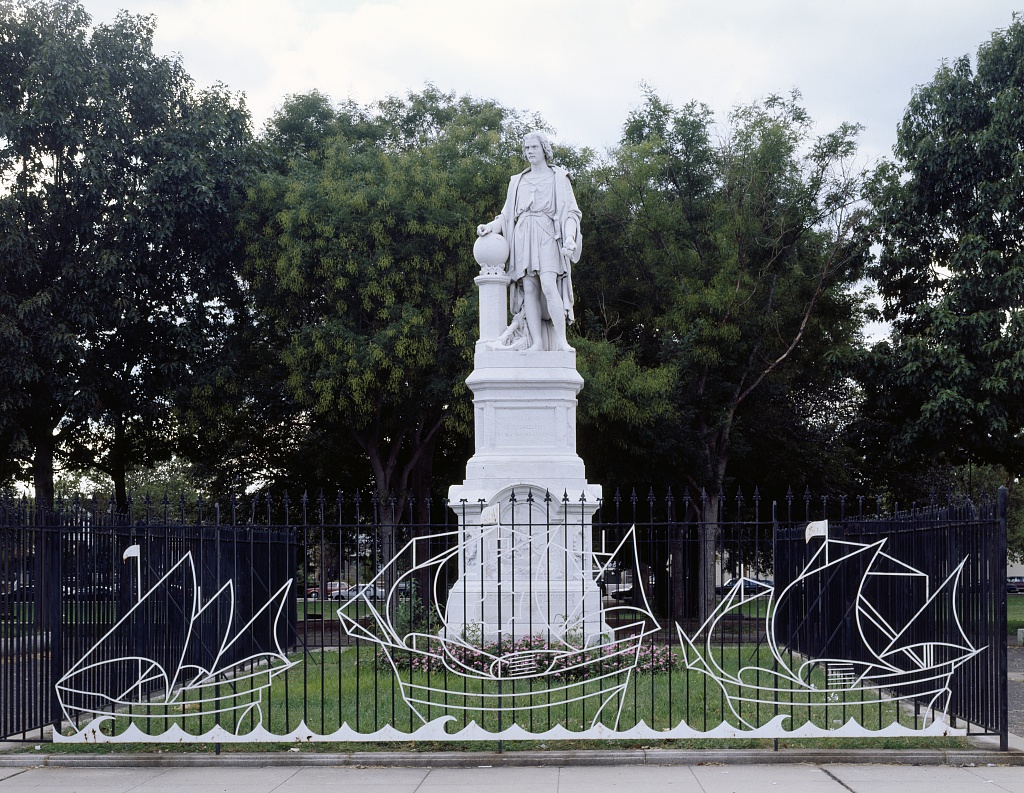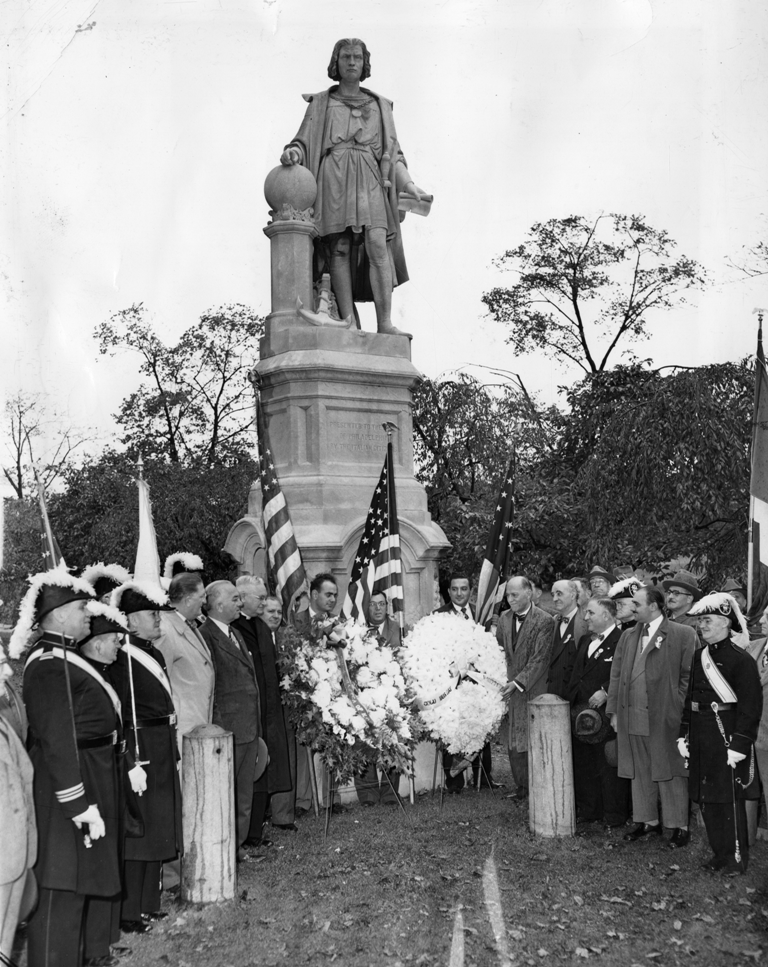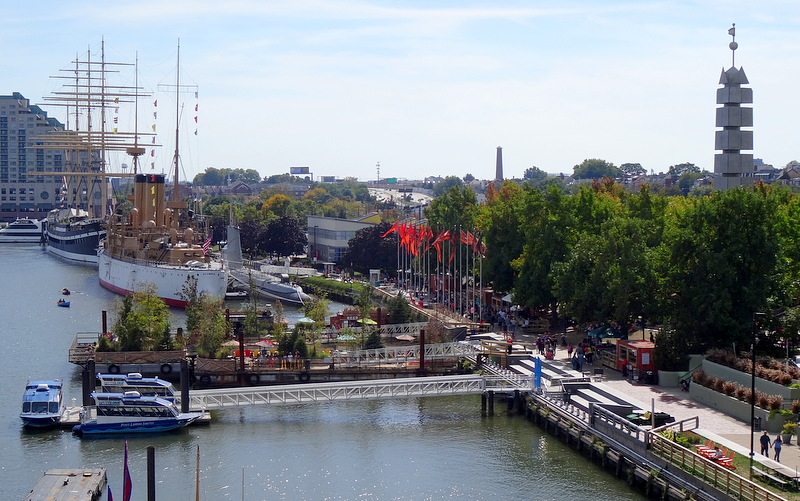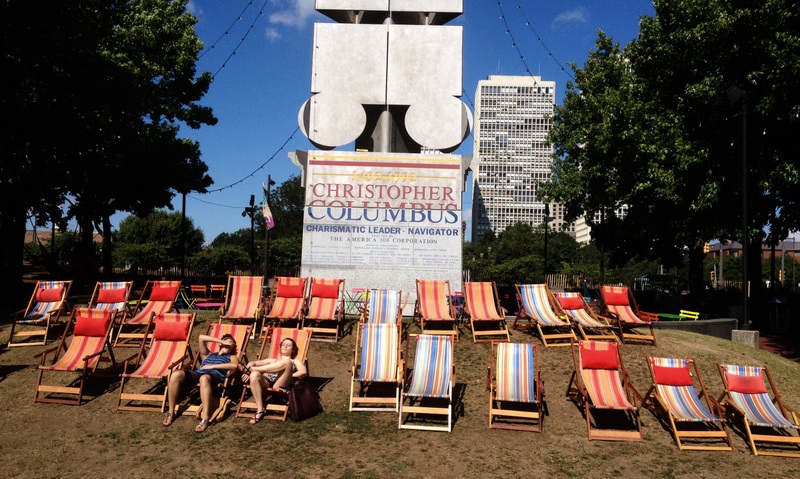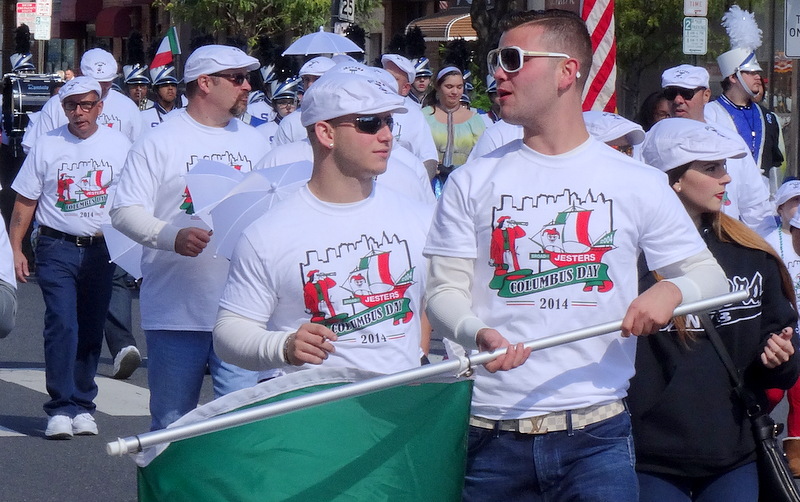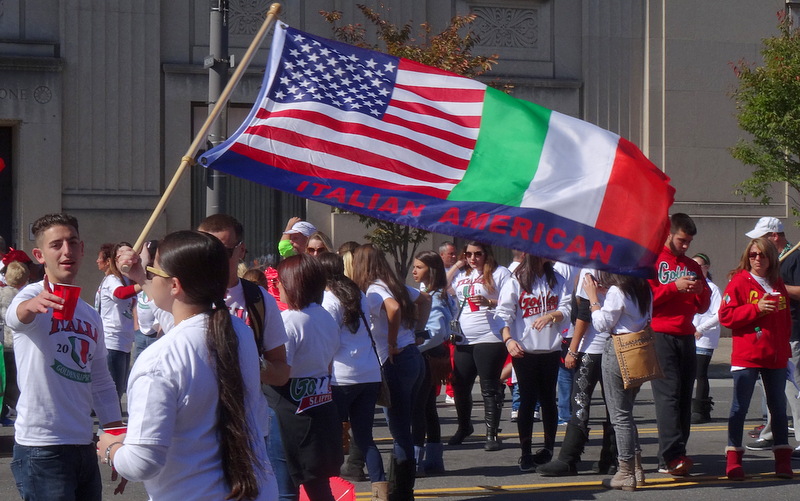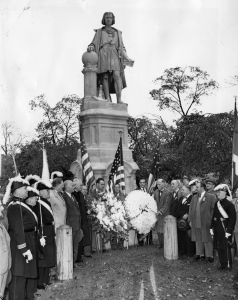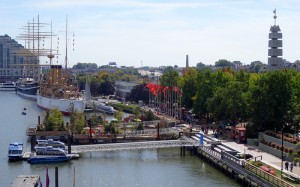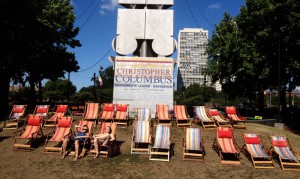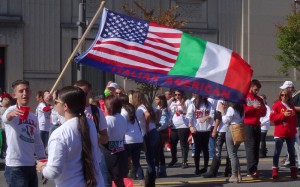Columbus Day
Essay
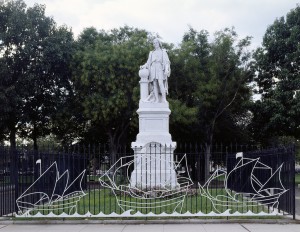
Observed on the second Monday in October, Columbus Day in the Philadelphia region gained prominence as Italian immigrant communities grew in the late nineteenth and early twentieth centuries. By commemorating the 1492 arrival of Christopher Columbus (1451-1506) in the New World, Italian-Americans embraced the navigator as their countryman, celebrated Italian culture, and called attention to their American loyalty and identity. While the practices and places for observing Columbus Day changed over time, the holiday in Philadelphia and its suburbs retained a distinctively Italian flavor even as Columbus became a controversial figure in American history.
The first major anniversary of Columbus to be celebrated in the United States, 1792, passed quietly in Philadelphia although not without notice. While Boston and New York hosted public events, in Philadelphia the nationally circulated Daily American Advertiser published an oration about Columbus delivered earlier at Princeton College in New Jersey.
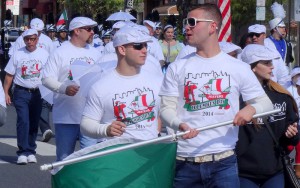
The reputation of Columbus as an American hero grew during the nineteenth century following the 1827 publication of The Life and Voyages of Christopher Columbus, by Washington Irving. It was not until the 1860s, however, that Columbus Day emerged as an annual celebration among Italian immigrant communities, first in New York in 1866 and in Philadelphia by 1869. That year, the Societá di Unione e Fratellanza Italiana, a mutual aid society in South Philadelphia, held the first in a series of annual balls on October 12 and made honoring Columbus one of its central activities. In 1876, Italian-Americans dedicated a monument of Columbus in Fairmount Park as their contribution to the Centennial celebration of the United States.
Italian-Americans embraced Columbus because of the place of his birth, the city-state of Genoa, within the region that became part of the Italian nation formed in 1861. Although Columbus’s birthplace has at times been debated by scholars and others, nineteenth-century immigrants to the United States did not question their shared heritage with the “discoverer” of America. They also identified with Columbus on the basis of shared religion, and the Catholic Church became a major proponent of commemorating Columbus for his role in extending Catholicism to the New World.
The ethnic and religious character of the holiday was clear in Philadelphia in 1892, the four-hundredth anniversary of the first Columbus voyage, which came in the midst of a surge of Italian immigration. In addition to celebrations in Italian neighborhoods, the Columbus commemoration activities that year included a torchlight parade of Catholic organizations on Broad Street, a Solemn Pontifical Mass at the Cathedral on Logan Square, and a performance by parochial schoolchildren at the Academy of Music.
As an expression of American identity, Columbus Day had a patriotic spirit that combined with its ties to religion and ethnicity. As state governments began to grant legal status to the holiday in the first decades of the twentieth century, participation widened to include public officials, office-seekers, and military units. Patriotic overtones were especially apparent in Philadelphia during the Cold War era as parades and ceremonies at Independence Hall from the 1950s through the 1970s symbolically linked the arrival of Columbus in America with the founding of the republic.
Monuments to Christopher Columbus have anchored and sometimes shifted the location of Columbus Day observances. The Columbus monument dedicated in Fairmount Park in 1876 served as a focal point for commemoration for the next century, until the statue was moved to Marconi Plaza in South Philadelphia during the bicentennial year of 1976. Following its dedication there by Mayor Frank Rizzo (1920-91), the monument’s new location in the city’s traditionally Italian neighborhood became the destination of the annual Columbus Day parade. In Camden, a Columbus monument erected in 1915 by the Sons of Italy in Forest Hill Park (later renamed Farnham Park) played a similar role as a site of commemoration in the first half of the twentieth century. A Columbus monument in Norristown, Pennsylvania, dedicated in 1992 after years of effort, from that point forward became the centerpiece for celebration each year in the Montgomery County seat.
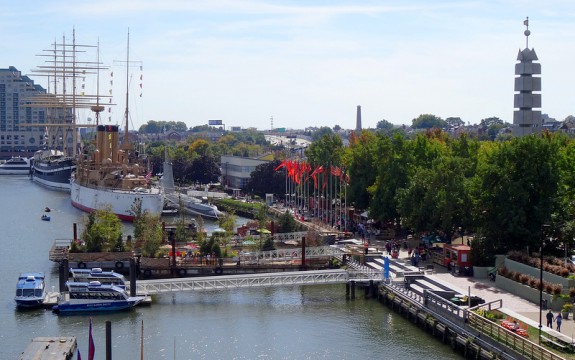
By the time of the five-hundredth anniversary of the first Columbus voyage in 1992, celebrating the navigator became more controversial and contentious. When the Philadelphia City Council voted in 1989 to rename a portion of Delaware Avenue as Columbus Boulevard, Native Americans protested that Columbus represented conquest of their land and neighborhood groups resisted the loss of a familiar street name. In 1992 Penn’s Landing gained a new, modern obelisk to honor Columbus, but on the day of its unveiling a group dressed as Native Americans splattered the monument with red paint and painted over “Columbus Boulevard” street signs.
While the history and reputation of Columbus became a matter of national and international debate, the region’s tourism promoters sought to draw visitors with a year of events called “Neighbors in the New World,” to emphasize multicultural unity and progress. Many museums and organizations embraced the theme, but others such as the annual American Indian Arts Festival at the Rankokus Reservation in Burlington County, New Jersey, stressed the cultural traditions that Columbus’s arrival endangered.
Adding to the layers of layers of multiculturalism and conflict attached to Columbus Day by the early twenty-first century, monuments to Columbus became flashpoints of controversy during the social justice uprisings of 2020. Camden removed its Columbus monument from Farnham Park, and demonstrators converged on the monument in South Philadelphia to protest its presence while others assembled to protect it. The City of Philadelphia enclosed the monument in a box until its future could be determined. Defenders of the monument echoed the continuing tradition of Columbus Day in South Philadelphia as a celebration of Italian heritage and the contributions of immigrants to Greater Philadelphia and the nation.
Charlene Mires is Professor of History at Rutgers-Camden and Editor-in-Chief of The Encyclopedia of Greater Philadelphia. (Author information current at time of publication.)
Copyright 2014, Rutgers University
Gallery
Backgrounders
Connecting Headlines with History
- Police probe Columbus Day vandalism in Philadelphia (Associated Press via WHYY, October 8, 2018)
- Where should Marconi Plaza's Columbus statue go? Philly officials taking suggestions (WHYY, June 24, 2020)
- Philadelphia Historical Commission votes to remove Marconi Plaza Columbus statue (WHYY, July 25, 2020)
